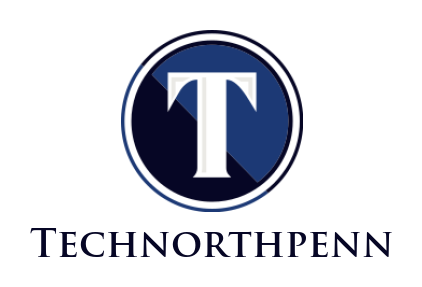Introduction
Ever heard someone drop the term icostamp in a crypto convo and nodded like you totally got it—even though you had zero clue what they meant? Yeah, you’re not alone. The world of crypto is full of jargon that sounds like it came straight out of a sci-fi novel. But stick with me, because icostamp is one of those under-the-radar buzzwords that’s about to go mainstream.
Whether you’re a seasoned blockchain buff or just a curious cat trying to decode the latest Web3 lingo, this article will walk you through everything you need to know about icostamp—what it is, where it came from, and why people are whispering (and sometimes shouting) about it.
So grab a coffee, kick back, and let’s unpack the fascinating little term that’s slipping into whitepapers, Discord threads, and maybe even your next portfolio: icostamp.
What Is icostamp, Anyway?
First things first—let’s address the elephant in the room.
The Definition:
At its core, icostamp is a term coined from the merger of “ICO” (Initial Coin Offering) and “timestamp.” While not officially part of any major crypto glossary (yet!), it’s being used in niche circles to describe a verification method that combines token launch data with immutably logged timestamps to enhance transparency in ICO processes.
Put simply, icostamp acts like a digital notary seal for token launches—time-stamping key stages of a project’s development and funding in a way that can’t be faked, fudged, or forgotten.
It’s got a slick ring to it, doesn’t it?
Why icostamp Is Gaining Traction
With all the rug pulls, vaporware, and exit scams floating around in the wild west of crypto, trust is in short supply. That’s where icostamp enters the chat.
Here’s what’s making it stand out:
✅ Transparency at Every Turn
Every stage of a project—from whitepaper release to smart contract deployment—gets recorded with an immutable timestamp. That means no backdating, no shady edits, and no “oops, we forgot to tell you” moments.
✅ Investor Confidence Boost
When you know exactly when something happened (and can prove it), you’re way more likely to drop your hard-earned ETH into a project. Simple as that.
✅ A New Layer of Accountability
Developers love to promise the moon. But with icostamp, they can be held accountable for every milestone. Deadlines? Tracked. Code updates? Time-stamped. Delays? Documented.
✅ Better Legal Protection
As regulators inch closer to cracking down on ICOs and crypto offerings, icostamp could offer a paper trail (well, a blockchain trail) that proves compliance, timelines, and transparency.
Where Did icostamp Come From?
Unlike terms like “blockchain” or “smart contract” that were born out of academic or technical circles, icostamp seems to have more underground origins. Its first appearances were spotted in late 2023 on niche developer forums and Telegram groups catering to token launchpads and audit firms.
Here’s the fun part: some believe it started as a joke—a tongue-in-cheek way to describe projects that “actually launched on time.” Others argue it was a serious proposal for improving due diligence tools in decentralized finance.
Either way, the term stuck.
And now? Well, it’s popping up on GitHub repos, whitepapers, and even the occasional investor deck.
How Does icostamp Work? (Without Getting Too Geeky)
Alright, let’s break it down without frying your brain with too much tech talk.
Think of icostamp like this:
You know when you send an important email and get that “sent at 3:41 PM” confirmation? Now imagine that, but for every key step in a crypto project—and recorded permanently on the blockchain.
Here’s how a basic icostamp setup might look:
-
Project Milestone Declaration
-
Devs announce key events: Whitepaper drop, contract audit, token listing, etc.
-
-
Smart Contract Integration
-
A smart contract logs the date/time of each event when executed.
-
-
Blockchain Storage
-
Events are recorded immutably—can’t be altered or deleted.
-
-
Public Verification Tool
-
Anyone can verify the timeline of the project. Think Etherscan for milestones.
-
It’s like a public accountability ledger. No smoke, no mirrors—just cold, hard timestamps.
Is icostamp Already Being Used?
Yup! While still relatively new, a few smaller projects have started integrating icostamp principles, particularly those trying to stand out in an increasingly skeptical ICO market.
Here are a few examples:
-
Launchpads are adding icostamp tools to help vet new listings.
-
Audit firms are incorporating icostamping into smart contract assessments.
-
Investors are starting to ask for timestamped roadmaps before they commit.
It’s still early days, but the momentum is real.
icostamp and the Future of DeFi
Imagine a world where every ICO came with a built-in receipt for its promises. No more guesswork. No more vaporware.
That’s the future icostamp hints at.
As decentralized finance matures, tools like icostamp will likely become not just useful—but expected. We might even see entire ICO platforms that refuse to list projects without verifiable icostamping.
Will it become a regulatory requirement? Too early to tell. But the winds are definitely blowing that way.
FAQs About icostamp
1. Is icostamp a specific product or a general concept?
Right now, it’s more of a conceptual framework than a polished product, though a few tools are in development to automate the process.
2. Do I need to be a developer to use icostamp?
Not necessarily. Some user-friendly platforms are beginning to offer plug-and-play timestamping tools. But for custom projects, devs will need to integrate it manually.
3. Can icostamp prevent scams?
It can’t stop bad actors entirely, but it makes it a lot harder for them to cover their tracks. Think of it as a deterrent, not a silver bullet.
4. What’s the difference between icostamp and a blockchain explorer?
Great question! While both record data on-chain, icostamp focuses specifically on project milestones during ICOs and makes them easy to audit in one place.
5. Is icostamp tied to any particular blockchain?
Nope! It’s blockchain-agnostic. Whether you’re on Ethereum, BNB Chain, Solana, or something more obscure, icostamp can be adapted to suit the protocol.
How to Know If a Project Uses icostamp
Here’s a quick checklist to help you spot whether a project’s walking the talk:
-
📅 Are key events logged with dates/times?
-
🛠️ Can you view the logs via a public smart contract?
-
📖 Is the roadmap verifiable on-chain?
-
🧾 Does the audit include icostamp integration?
If you answered “yes” to most of the above—congrats, you’re looking at a project that’s at least trying to be transparent.
Conclusion: Should You Pay Attention to icostamp?
Absolutely. Is it perfect? No. Is it mainstream? Not quite. But icostamp is one of those scrappy little ideas that could genuinely reshape how trust works in crypto fundraising.
In a world of overpromises, vaporware, and fake launch dates, it adds something rare and valuable: proof.
Whether you’re an investor, a developer, or just crypto-curious, keeping an eye on the rise of icostamp could save you time, money, and one hell of a headache.
So next time someone brings up icostamp in a conversation, you won’t just nod politely—you’ll lean in.

